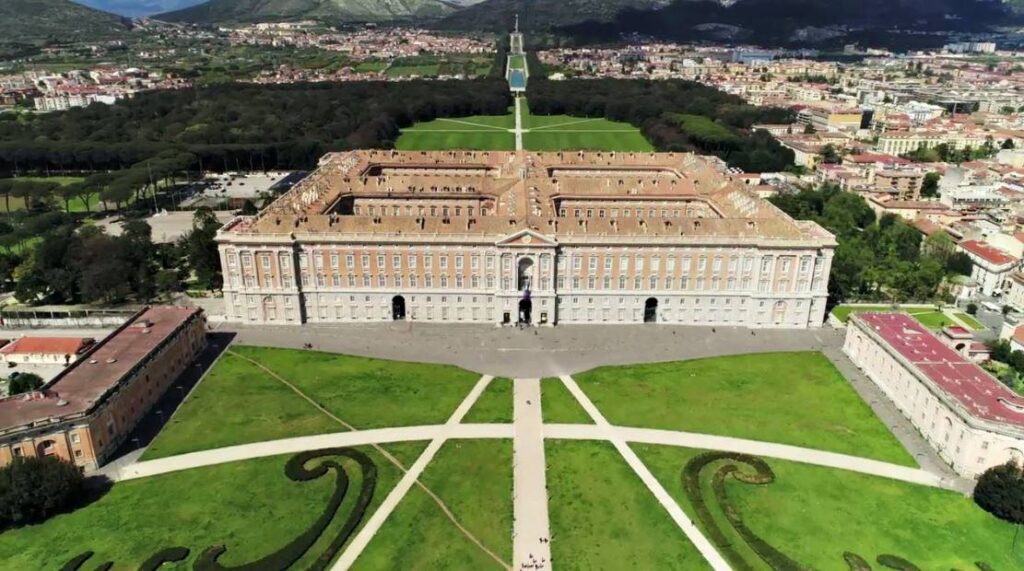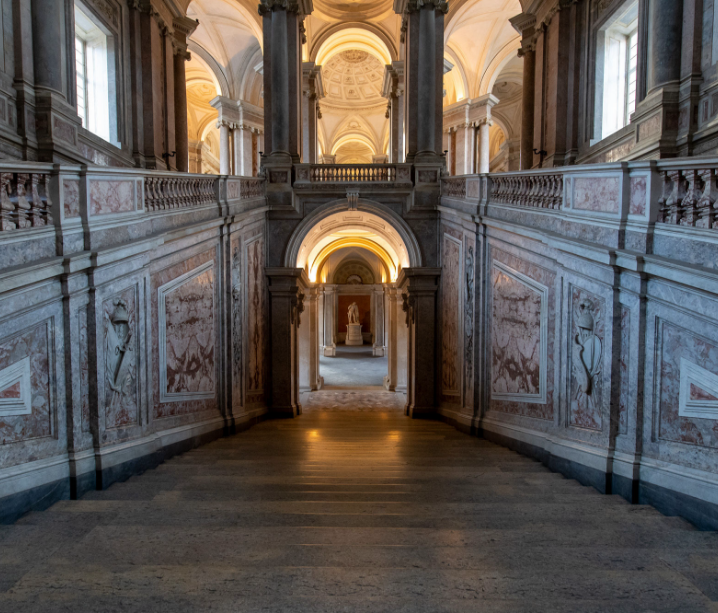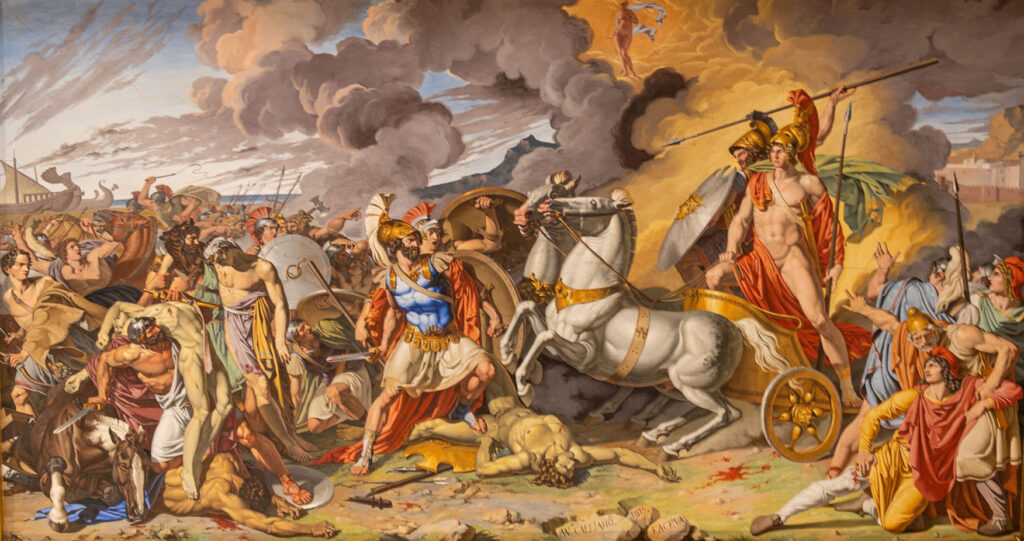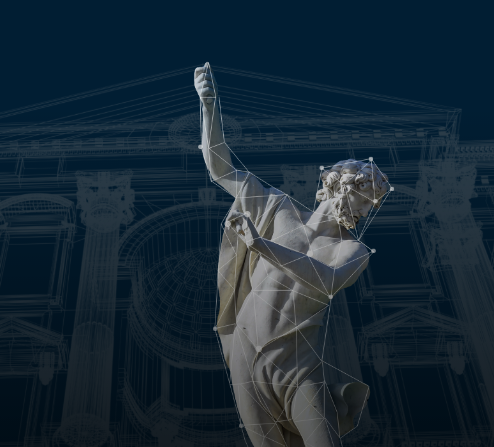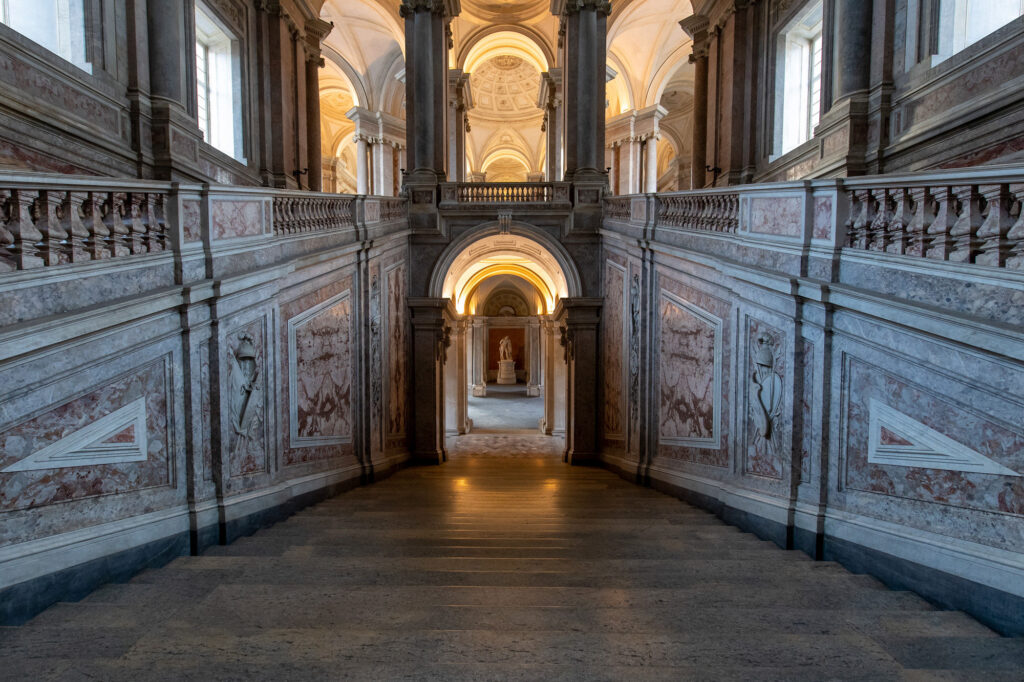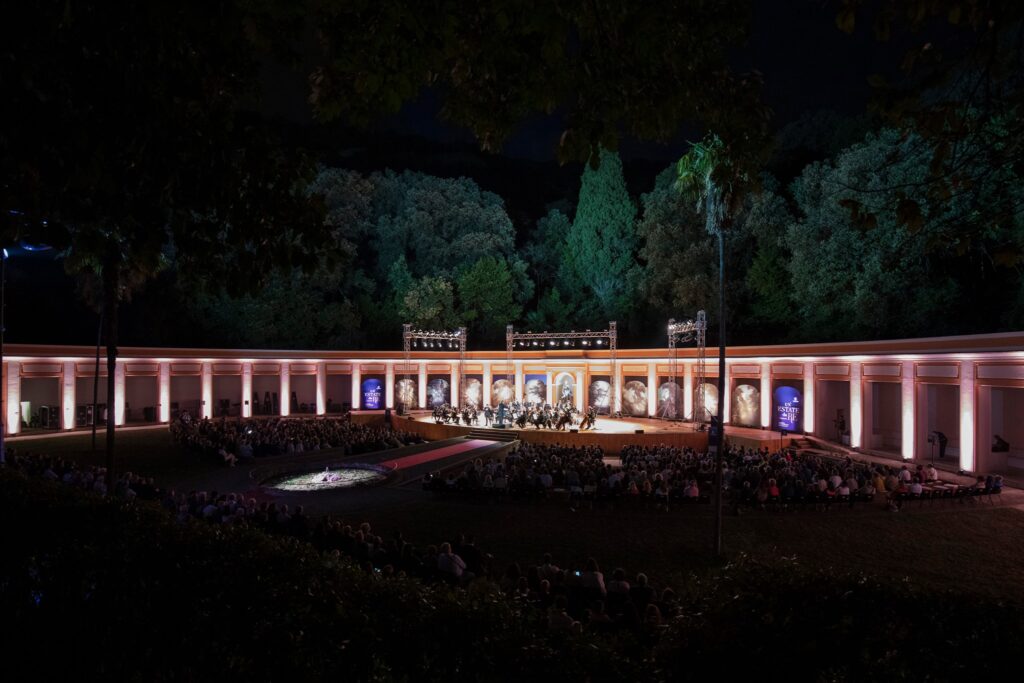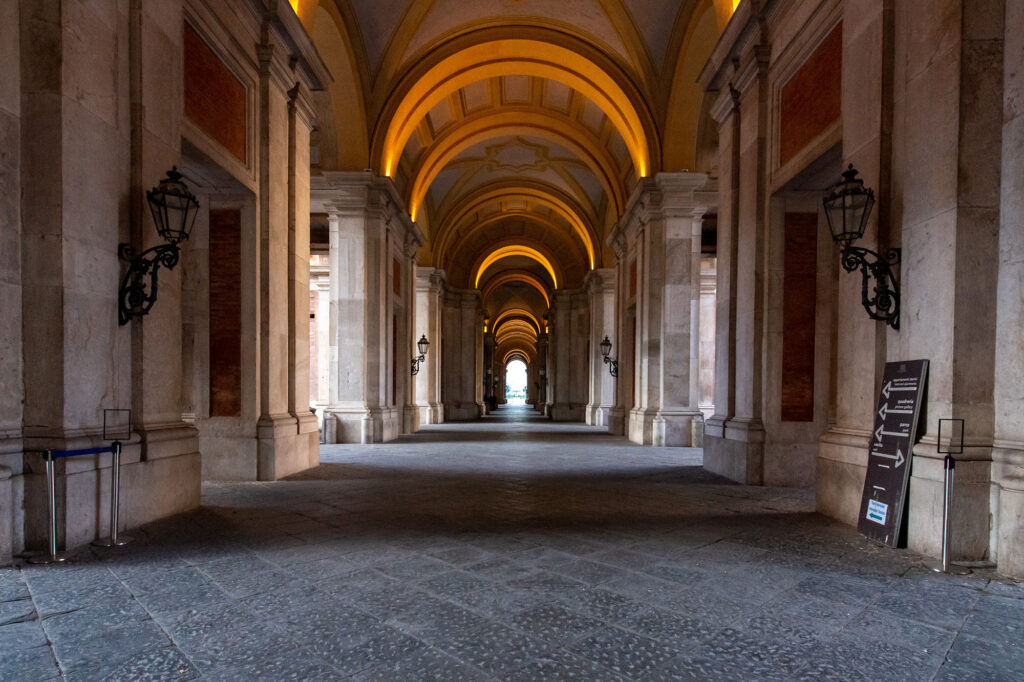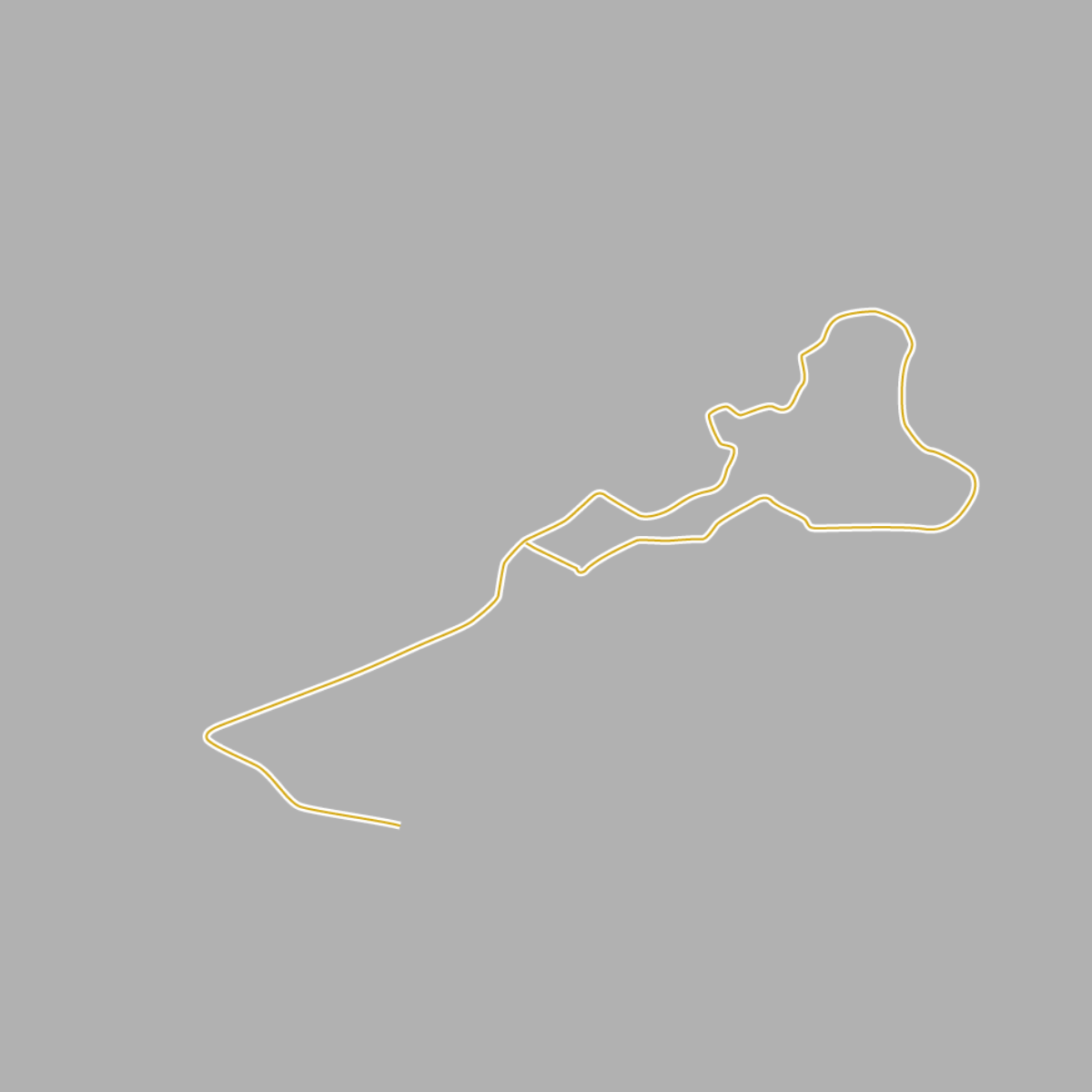An entrance worthy of a king
The Royal Staircase that the sovereigns walked to reach their apartments opens to the right of the Lower Vestibule, in front of the statue of Hercules from the Farnese Collection, A perfect synthesis of classical rigour and Baroque scenography, the Staircase is made up of 116 steps of Trapani marble, distributed between the monumental central ramp and the lateral ramps that lead to the Upper Vestibule. The marbles from the Kingdom’s quarries create a highly suggestive chromatic harmony.
The Upper Vestibule, octagonal in shape, is the fulcrum of the building where the central arms of the Palace cross. Here the space is enlivened by a swirling succession of vaults, arches, columns and pillars, which culminate in the spiral motif of the large central dome.The Upper Vestibule leads to the Palatine Chapel and the museum guided itinerary.
 Find out more
Find out more

The Iconographic Layout of the Staircase
All the statues fencing the grand staircase were designed by Luigi Vanvitelli to celebrate the greatness of Charles of Bourbon.
The marble lions guarding the central ramp represent the strength of reason and that the strength of weaponry, necessary to keep possession and safety of the territories.
On the wall at the end of the central ramp three large sculptures stand out: in the centre is the Royal Majesty by Tommaso Solari, which depicts King Charles riding a lion, flanked by Andrea Violani’s Merit and Gaetano Salomone’s Truth. These last figures represented the qualities that every guest of the Royal House had to possess in order to be admitted to the presence of the King.



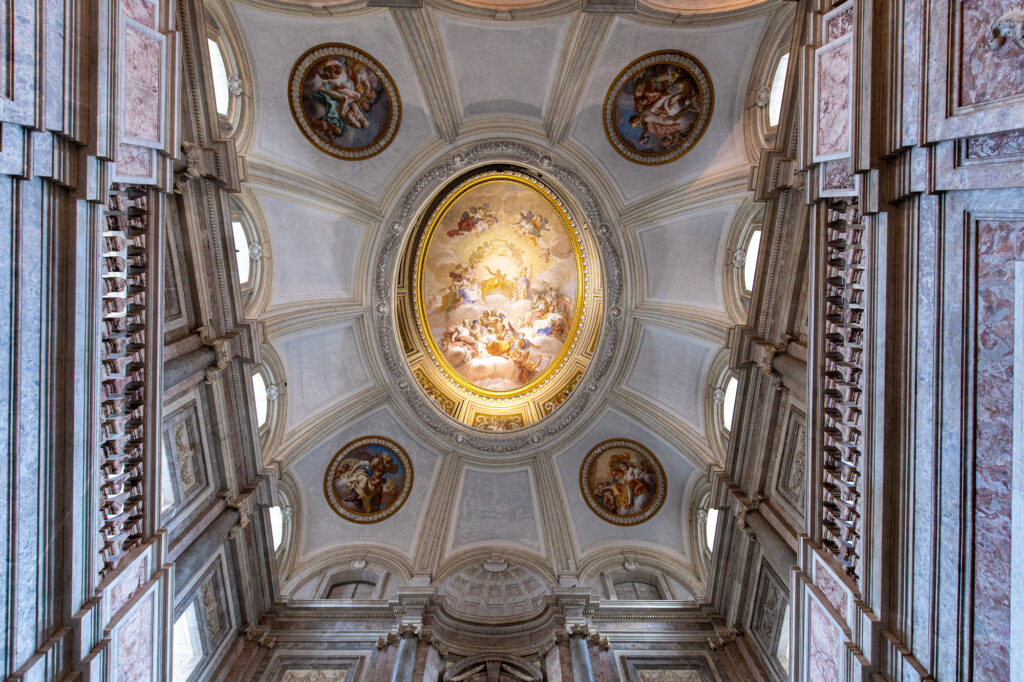
The Double Elliptical Vault
The vault of the Royal Staircase is a further source of amazement for the Royal Palace’s visitors. It consists of a double structure, which testifies to the engineering skills of Luigi Vanvitelli. Through the external vault, finely decorated with allegories of the four seasons by Girolamo Starace-Franchis, a second internal vault can be glimpsed on which Starace-Franchis had frescoed the Apollo’s Palace. But at the time of the Bourbons, the special effects did not end there: in the space between the two vaults, hidden from view, the orchestra was arranged to triumphantly accompany the entrance of the royal procession.




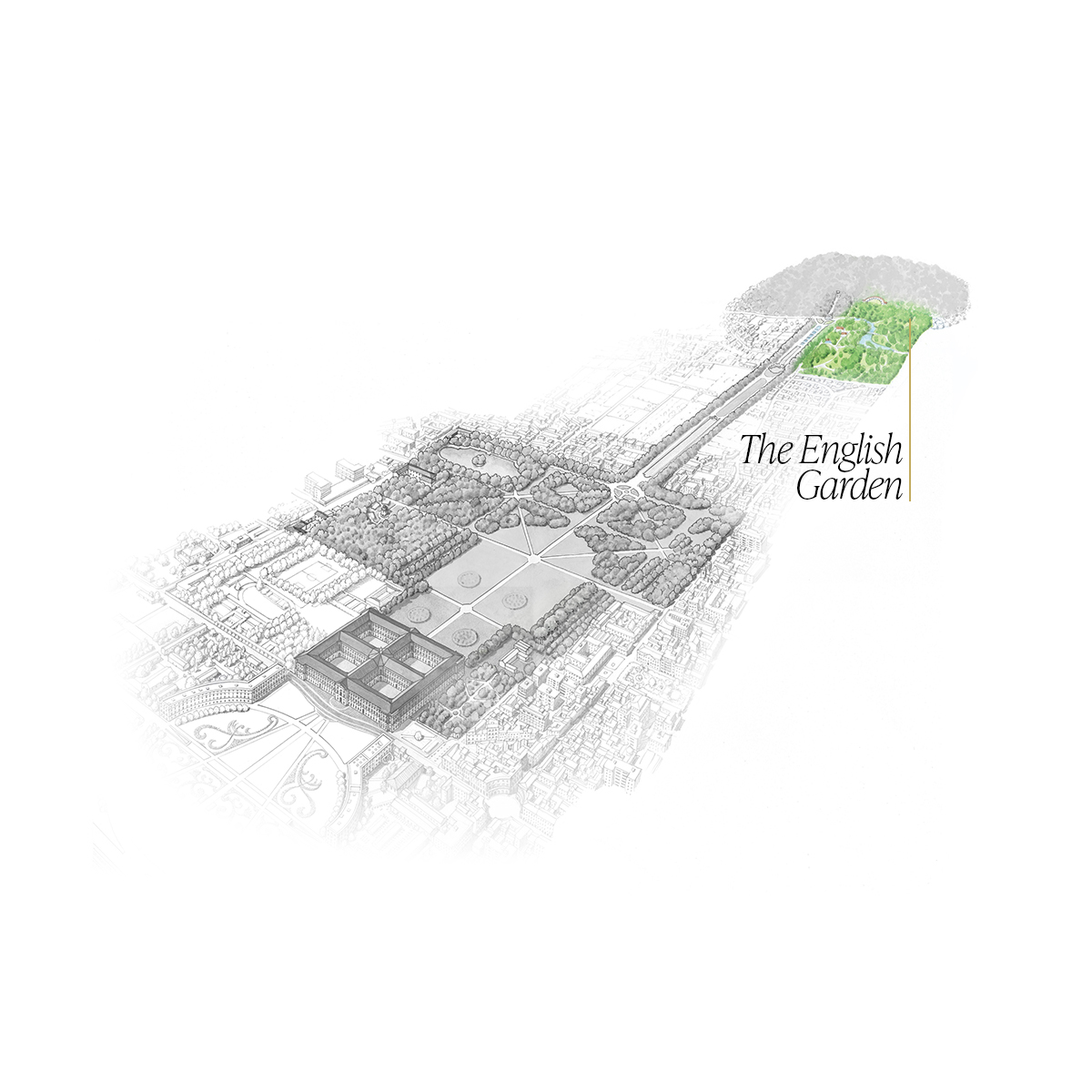

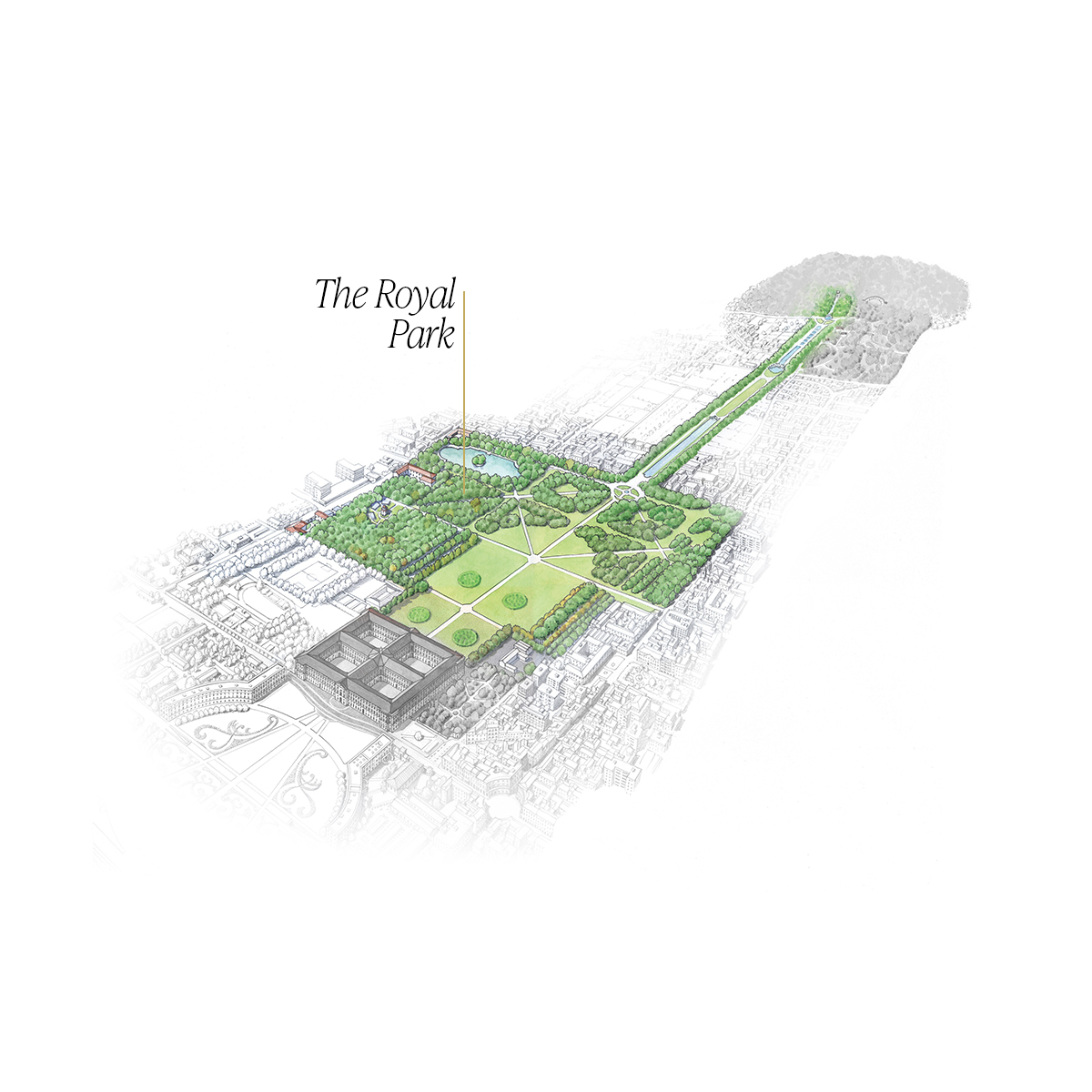
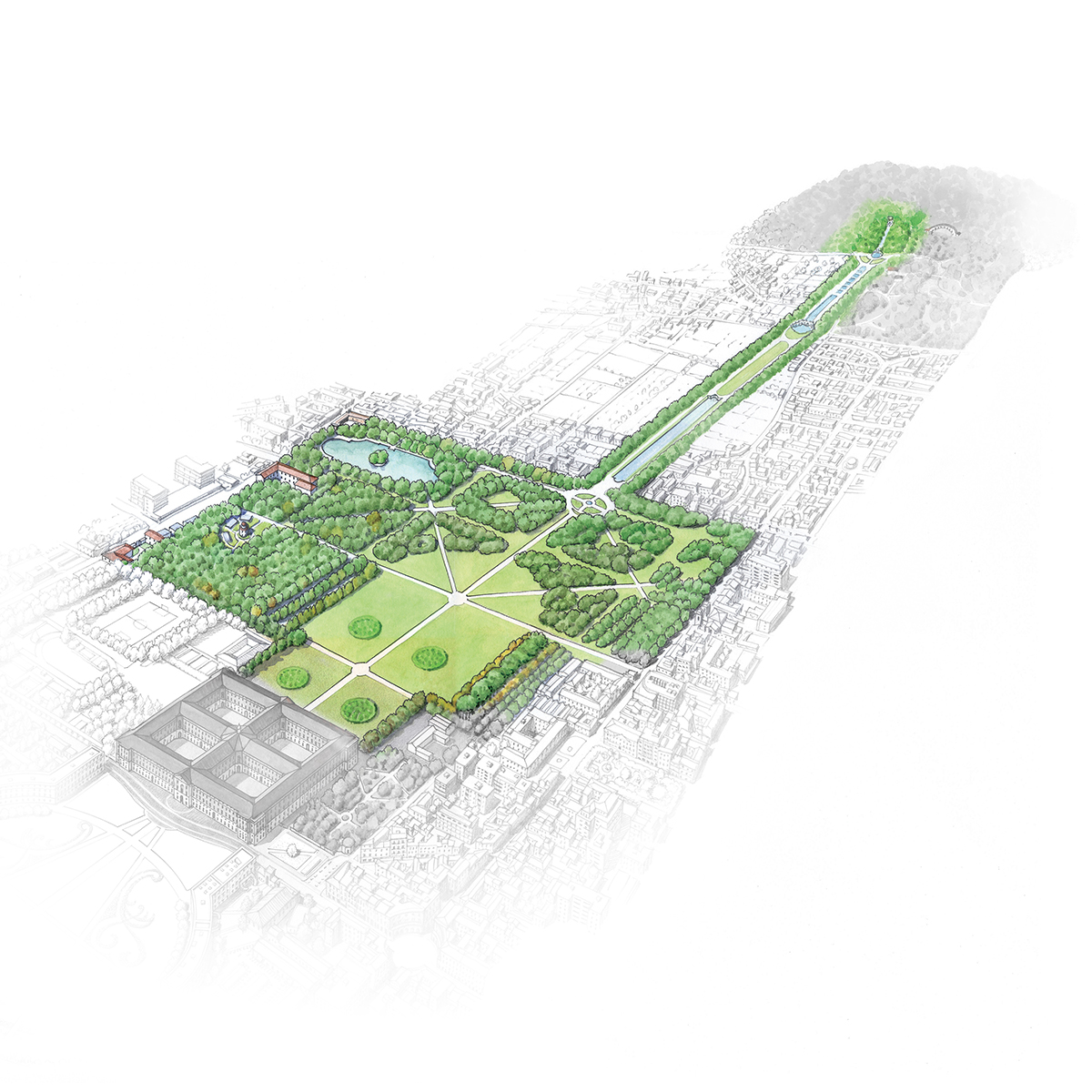
 Via d'acqua
Via d'acqua Castelluccia
Castelluccia Peschiera
Peschiera The Fountain of Dolphins
The Fountain of Dolphins The Fountain of Aeolus
The Fountain of Aeolus The Fountain of Ceres
The Fountain of Ceres The Fountain of Diana and Actaeon
The Fountain of Diana and Actaeon The Fountain of Venus and Adonis
The Fountain of Venus and Adonis The waterfall and Torrione
The waterfall and Torrione The Bosco Vecchio (Old Wood)
The Bosco Vecchio (Old Wood) The Margherita Fountain
The Margherita Fountain





